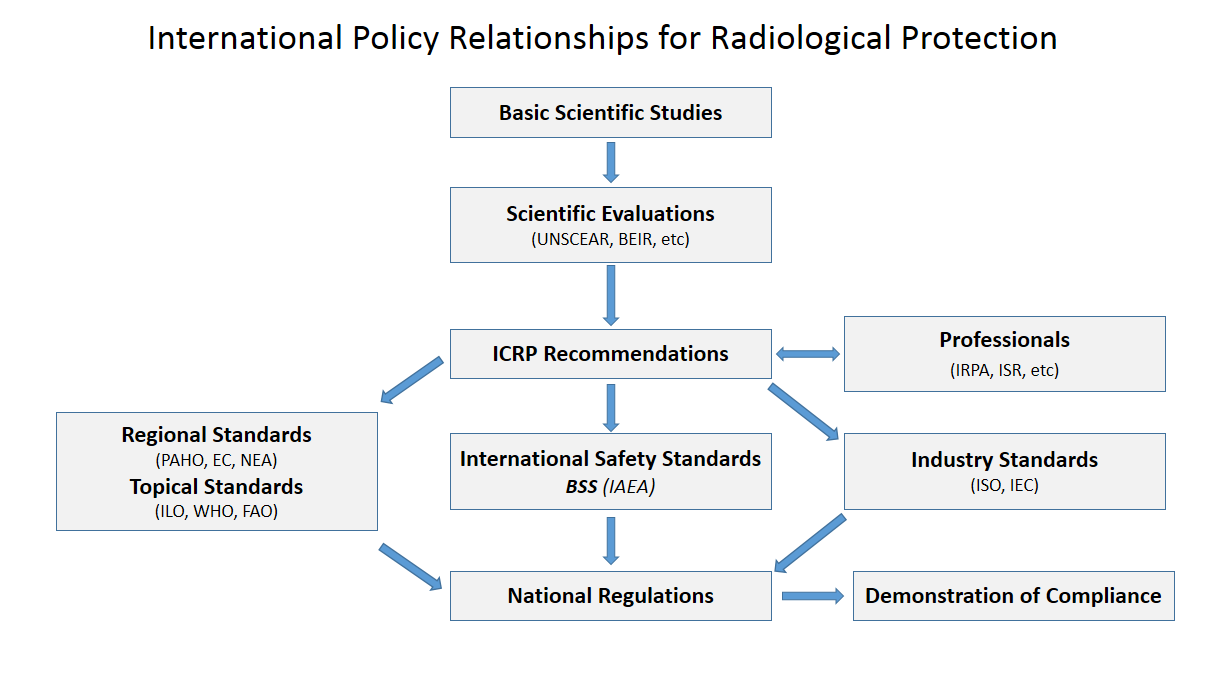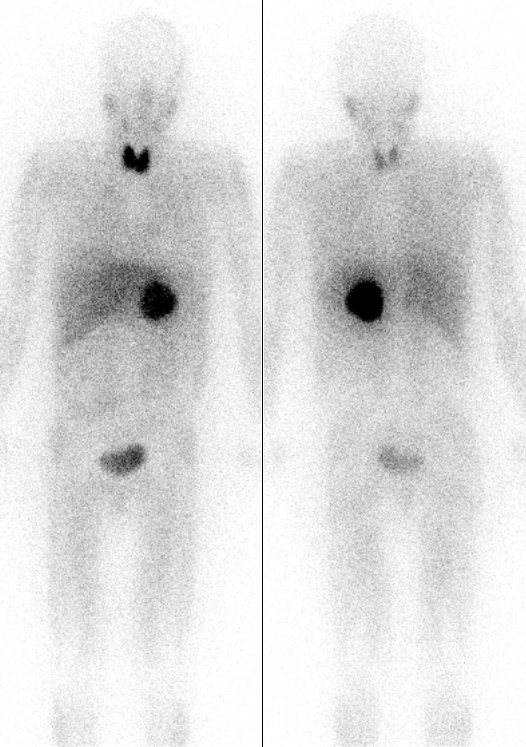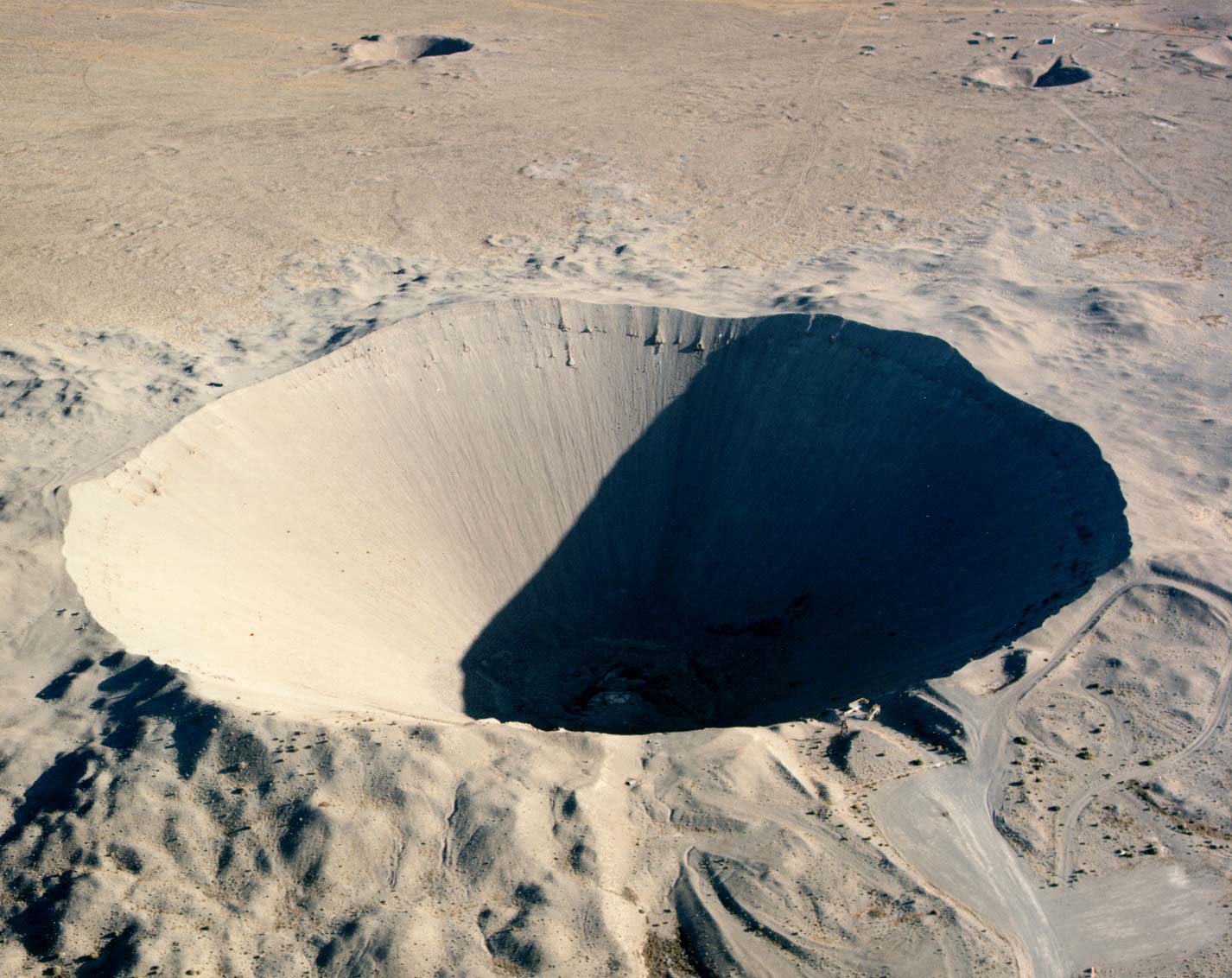|
Committed Dose Equivalent
Committed dose equivalent and Committed effective dose equivalent are dose quantities used in the United States system of radiological protection for irradiation due to an internal source. Committed dose equivalent (CDE) CDE is defined by the United States Nuclear Regulatory Commission in Title 10, Section 20.1003, of the Code of Federal Regulations (10 CFR 20.1003), such that "The Committed dose equivalent, CDE (HT,50) is the dose to some specific organ or tissue of reference (T) that will be received from an intake of radioactive material by an individual during the 50-year period following the intake". "The calculation of the committed effective dose equivalent (CEDE) begins with the determination of the equivalent dose, HT, to a tissue or organ, T. Where DT,R is the absorbed dose in rads (one gray, an SI unit, equals 100 rads) averaged over the tissue or organ, T, due to radiation type, R, and WR is the radiation weighting factor. The unit of equivalent dose is the rem (siever ... [...More Info...] [...Related Items...] OR: [Wikipedia] [Google] [Baidu] |
|
 |
Radiological Protection
Radiation protection, also known as radiological protection, is defined by the International Atomic Energy Agency (IAEA) as "The protection of people from harmful effects of exposure to ionizing radiation, and the means for achieving this". Exposure can be from a source of radiation external to the human body or due to internal irradiation caused by the ingestion of radioactive contamination. Ionizing radiation is widely used in industry and medicine, and can present a significant health hazard by causing microscopic damage to living tissue. There are two main categories of ionizing radiation health effects. At high exposures, it can cause "tissue" effects, also called "deterministic" effects due to the certainty of them happening, conventionally indicated by the unit gray and resulting in acute radiation syndrome. For low level exposures there can be statistically elevated risks of radiation-induced cancer, called "stochastic effects" due to the uncertainty of them happening, co ... [...More Info...] [...Related Items...] OR: [Wikipedia] [Google] [Baidu] |
 |
Potassium Iodide
Potassium iodide is a chemical compound, medication, and dietary supplement. It is a medication used for treating hyperthyroidism, in radiation emergencies, and for protecting the thyroid gland when certain types of radiopharmaceuticals are used. It is also used for treating skin sporotrichosis and phycomycosis. It is a supplement used by people with low dietary intake of iodine. It is administered orally. Common side effects include vomiting, diarrhea, abdominal pain, rash, and swelling of the salivary glands. Other side effects include allergic reactions, headache, goitre, and depression. While use during pregnancy may harm the baby, its use is still recommended in radiation emergencies. Potassium iodide has the chemical formula K I. Commercially it is made by mixing potassium hydroxide with iodine. Potassium iodide has been used medically since at least 1820. It is on the World Health Organization's List of Essential Medicines. Potassium iodide is available as a g ... [...More Info...] [...Related Items...] OR: [Wikipedia] [Google] [Baidu] |
|
Collective Dose
The collective effective dose, dose quantity S, is calculated as the sum of all individual effective doses over the time period or during the operation being considered due to ionizing radiation. It can be used to estimate the total health effects of a process or accidental release involving ionizing radiation to an exposed population. The total collective dose is the dose to the exposed human population between the time of release until its elimination from the environment, perhaps integrating to time equals infinity. However, doses are generally reported for specific populations and a stated time interval. The International Commission on Radiological Protection (ICRP) states: "To avoid aggregation of low individual doses over extended time periods and wide geographical regions the range in effective dose and the time period should be limited and specified. Limitations The ICRP states; "Collective effective dose is an instrument for optimisation, for comparing radiological technolo ... [...More Info...] [...Related Items...] OR: [Wikipedia] [Google] [Baidu] |
|
|
Ionizing Radiation
Ionizing (ionising) radiation, including Radioactive decay, nuclear radiation, consists of subatomic particles or electromagnetic waves that have enough energy per individual photon or particle to ionization, ionize atoms or molecules by detaching electrons from them. Some particles can travel up to 99% of the speed of light, and the electromagnetic waves are on the high-energy portion of the electromagnetic spectrum. Gamma rays, X-rays, and the higher energy vacuum ultraviolet, ultraviolet part of the electromagnetic spectrum are ionizing radiation; whereas the lower energy ultraviolet, visible light, infrared, microwaves, and radio waves are non-ionizing radiation. Nearly all types of laser light are non-ionizing radiation. The boundary between ionizing and non-ionizing radiation in the ultraviolet area cannot be sharply defined, as different molecules and atoms ionize at Ionization energies of the elements (data page), different energies. The energy of ionizing radiation starts ... [...More Info...] [...Related Items...] OR: [Wikipedia] [Google] [Baidu] |
|
 |
Radiation Poisoning
Acute radiation syndrome (ARS), also known as radiation sickness or radiation poisoning, is a collection of health effects that are caused by being exposed to high amounts of ionizing radiation in a short period of time. Symptoms can start within an hour of exposure, and can last for several months. Early symptoms are usually nausea, vomiting and loss of appetite. In the following hours or weeks, initial symptoms may appear to improve, before the development of additional symptoms, after which either recovery or death follows. ARS involves a total dose of greater than 0.7 Gy (70 rad), that generally occurs from a source outside the body, delivered within a few minutes. Sources of such radiation can occur accidentally or intentionally. They may involve nuclear reactors, cyclotrons, certain devices used in cancer therapy, nuclear weapons, or radiological weapons. It is generally divided into three types: bone marrow, gastrointestinal, and neurovascular syndrome, with bone m ... [...More Info...] [...Related Items...] OR: [Wikipedia] [Google] [Baidu] |
|
Radioactivity
Radioactive decay (also known as nuclear decay, radioactivity, radioactive disintegration, or nuclear disintegration) is the process by which an unstable atomic nucleus loses energy by radiation. A material containing unstable nuclei is considered ''radioactive''. Three of the most common types of decay are Alpha decay, alpha, Beta decay, beta, and Gamma ray, gamma decay. The weak force is the Fundamental interactions, mechanism that is responsible for beta decay, while the other two are governed by the electromagnetic force, electromagnetic and nuclear forces. Radioactive decay is a randomness, random process at the level of single atoms. According to quantum mechanics, quantum theory, it is impossible to predict when a particular atom will decay, regardless of how long the atom has existed. However, for a significant number of identical atoms, the overall decay rate can be expressed as a decay constant or as a half-life. The half-lives of radioactive atoms have a huge range: f ... [...More Info...] [...Related Items...] OR: [Wikipedia] [Google] [Baidu] |
|
|
Thoron
There are 39 known isotopes of radon (86Rn), from 193Rn to 231Rn; all are radioactive. The most stable isotope is 222Rn with a half-life of 3.8235 days, which decays into . Six isotopes of radon, 217, 218, 219, 220, 221, 222Rn, occur in trace quantities in nature as decay products of, respectively, 217At, 218At, 223Ra, 224Ra, 225Ra, and 226Ra. 217Rn and 221Rn are produced in rare branches in the decay chain of trace quantities of 237Np; 222Rn (and also 218Rn in a rare branch) is an intermediate step in the decay chain of 238U; 219Rn is an intermediate step in the decay chain of 235U; and 220Rn occurs in the decay chain of 232Th. List of isotopes , -id=Radon-193 , 193Rn , , style="text-align:right" , 86 , style="text-align:right" , 107 , 193.009708(27) , 1.15(27) ms , α , 189Po , (3/2−) , , -id=Radon-194 , rowspan=2, 194Rn , rowspan=2, , rowspan=2 style="text-align:right" , 86 , rowspan=2 style="text-align:right" , 108 , rowspan=2, 194.006146(18) , r ... [...More Info...] [...Related Items...] OR: [Wikipedia] [Google] [Baidu] |
|
 |
Alpha Particle
Alpha particles, also called alpha rays or alpha radiation, consist of two protons and two neutrons bound together into a particle identical to a helium-4 nucleus. They are generally produced in the process of alpha decay but may also be produced in different ways. Alpha particles are named after the first letter in the Greek alphabet, α. The symbol for the alpha particle is α or α2+. Because they are identical to helium nuclei, they are also sometimes written as He2+ or 2+ indicating a helium ion with a +2 charge (missing its two electrons). Once the ion gains electrons from its environment, the alpha particle becomes a normal (electrically neutral) helium atom . Alpha particles have a net spin of zero. When produced in standard alpha radioactive decay, alpha particles generally have a kinetic energy of about 5 MeV and a velocity in the vicinity of 4% of the speed of light. They are a highly ionizing form of particle radiation, with low penetration depth (stopped b ... [...More Info...] [...Related Items...] OR: [Wikipedia] [Google] [Baidu] |
|
Thorium
Thorium is a chemical element; it has symbol Th and atomic number 90. Thorium is a weakly radioactive light silver metal which tarnishes olive grey when it is exposed to air, forming thorium dioxide; it is moderately soft, malleable, and has a high melting point. Thorium is an electropositive actinide whose chemistry is dominated by the +4 oxidation state; it is quite reactive and can ignite in air when finely divided. All known thorium isotopes are unstable. The most stable isotope, 232Th, has a half-life of 14.05 billion years, or about the age of the universe; it decays very slowly via alpha decay, starting a decay chain named the thorium series that ends at stable 208 Pb. On Earth, thorium and uranium are the only elements with no stable or nearly-stable isotopes that still occur naturally in large quantities as primordial elements. Thorium is estimated to be over three times as abundant as uranium in the Earth's crust, and is chiefly refined from monazite sa ... [...More Info...] [...Related Items...] OR: [Wikipedia] [Google] [Baidu] |
|
|
Uranium
Uranium is a chemical element; it has chemical symbol, symbol U and atomic number 92. It is a silvery-grey metal in the actinide series of the periodic table. A uranium atom has 92 protons and 92 electrons, of which 6 are valence electrons. Uranium radioactive decay, radioactively decays, usually by emitting an alpha particle. The half-life of this decay varies between 159,200 and 4.5 billion years for different isotopes of uranium, isotopes, making them useful for dating the age of the Earth. The most common isotopes in natural uranium are uranium-238 (which has 146 neutrons and accounts for over 99% of uranium on Earth) and uranium-235 (which has 143 neutrons). Uranium has the highest atomic weight of the primordial nuclide, primordially occurring elements. Its density is about 70% higher than that of lead and slightly lower than that of gold or tungsten. It occurs naturally in low concentrations of a few Parts-per notation#Parts-per expressions, parts per million in soil, ... [...More Info...] [...Related Items...] OR: [Wikipedia] [Google] [Baidu] |
|
|
Plutonium
Plutonium is a chemical element; it has symbol Pu and atomic number 94. It is a silvery-gray actinide metal that tarnishes when exposed to air, and forms a dull coating when oxidized. The element normally exhibits six allotropes and four oxidation states. It reacts with carbon, halogens, nitrogen, silicon, and hydrogen. When exposed to moist air, it forms oxides and hydrides that can expand the sample up to 70% in volume, which in turn flake off as a powder that is pyrophoric. It is radioactive and can accumulate in bones, which makes the handling of plutonium dangerous. Plutonium was first synthesized and isolated in late 1940 and early 1941, by deuteron bombardment of uranium-238 in the cyclotron at the University of California, Berkeley. First, neptunium-238 (half-life 2.1 days) was synthesized, which then beta-decayed to form the new element with atomic number 94 and atomic weight 238 (half-life 88 years). Since uranium had been named after the planet Uranus ... [...More Info...] [...Related Items...] OR: [Wikipedia] [Google] [Baidu] |
|
 |
Nuclear Explosive
A nuclear explosive is an explosive device that derives its energy from nuclear reactions. Almost all nuclear explosive devices that have been designed and produced are nuclear weapons intended for warfare. Other, non-warfare, applications for nuclear explosives have occasionally been proposed. For example, nuclear pulse propulsion is a form of spacecraft propulsion that would use nuclear explosives to provide impulse to a spacecraft. A similar application is the proposal to use nuclear explosives for asteroid deflection. From 1958 to 1965 the United States government ran a project to design a nuclear explosive powered nuclear pulse rocket called Project Orion. Never built, this vessel would use repeated nuclear explosions to propel itself and was considered surprisingly practical. It is thought to be a feasible design for interstellar travel. Nuclear explosives were once considered for use in large-scale excavation. A nuclear explosion could be used to create a harbor, or a mo ... [...More Info...] [...Related Items...] OR: [Wikipedia] [Google] [Baidu] |